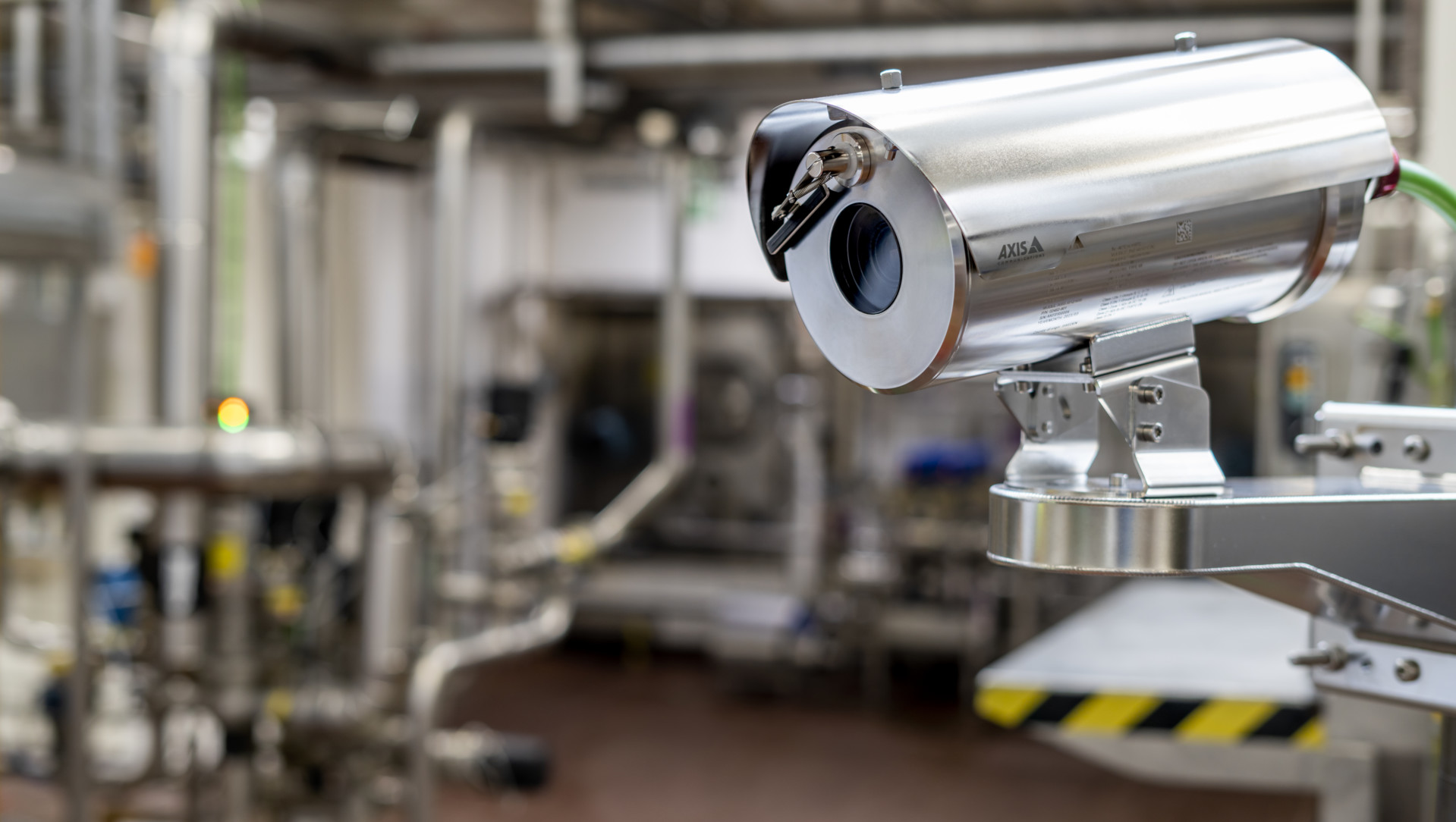Small, Friendly Linux Devices
2024-02-05
Post by: Joakim Roubert

—The power of Axis devices in fields such as Industry 4.0
Axis devices are small, friendly Linux® devices. At Axis, we know this of course, but outside our company walls, it seems not to be common knowledge—a reason for writing this blog post.
I’m a software developer myself, so I know that if you give a Linux device to a software developer, they will victoriously cheer, since Linux is their home turf and comfort food. They know exactly how to handle a such a device. And when that device also sports a smörgåsbord of interesting sensors, the horizon of exciting possibilities lies ahead.
What if you want to do something with a small Axis device, but the default firmware lacks software support for it?
Fear not! Not only can you put additional software on your Axis device in several different ways, it’s also really simple. Certainly, you can for example add the software you want to run on the Axis device’s SD card, or you can log in to the device’s command line interface (CLI) and download the software, but the most convenient way (if you ask me) is to use Axis Camera Application Platform (ACAP). Behind the name ACAP version 4 there is both the ability to build and package software for convenient installation (referred to as “native ACAP”, essentially nothing stranger than a tar.gz archive with a specific file structure, the binary, a manifest and an .eap file extension) and next to that the possibility to run regular (OCI) software containers (a topic I’ve covered in a previous blog post).
Now the software developer has both a Linux device with intriguing and capable sensors, along with the means to swiftly add additional software to it—all degrees of freedom (short of infinite amounts of RAM, CPU power and storage, of course). Things need to become more tangible to show what this can be used for, and as it turns out, the realm of Industry 4.0 is a very good fit for that.
“Industry 4.0? I wasn’t even aware there was a 1.0, 2.0 or even 3.0!” I told my manager back in 2021 when tasked with investigating the integration of Axis products into Industry 4.0. But I soon found out that Industry 1.0 marked the inception of industries during the 19th century industrialization. Industry 2.0 brought the electrification of factories and the introduction of assembly lines (think Henry Ford), and Industry 3.0 the automation with programmable logic controllers (PLCs), industrial robots, computers and such. Now, the ongoing shift known as Industry 4.0 is sweeping the globe, connecting things in a one-to-many fashion—somewhat like an Internet of Things (IoT)-ification.
Let’s explore two real world use cases to illustrate how Axis devices can easily solve otherwise challenging problems.
First, we have analog gauges. There are lots of them out there that are not going to be replaced with digital ones anytime soon. The gauges are monitored manually according to a certain schedule, either in person or through remote inspection (e.g. with a surveillance camera). Using an Axis camera with some basic video analytics, the camera becomes capable of identifying the readings. This data can then be transmitted through the network to any control system. Digital transformation. Axis has a publicly available open source ACAP application example on GitHub to showcase this, compatible with any contemporary Axis camera model.
The next use case is from manufacturing and the process industry, where entirely analog machinery is still commonplace. This equipment is often expensive, has a long lifespan, and features control lights that are today monitored manually. Due to warranty restrictions, any modifications or the addition of digital sensors are prohibited. In this scenario, an Axis camera can monitor the color of a designated region (the control light) within the scene, determining whether it aligns with the expected color or not. This means that the analog machinery gets digitally transformed when the operational status is now instantly fed into the factory’s control systems without requiring human intervention. Axis provides a publicly available open-source code ACAP application example for this solution on GitHub as well. Beyond control lights, the same method could be applied to verify the color of fluids in the process industry, ensuring they match a certain color and prompting action if they fall outside predefined tolerance boundaries.
So how many small applications can you run on an Axis device?
Well, it depends on how many system resources they require. I usually explain this with the example of driving to a furniture store in the family car: if someone tells me I can buy ten items and I opt for ten decorative pillows, they will fit nicely in the trunk, and I can even go grocery shopping on my way home. But if I buy ten sofa beds, I won’t be able to fit even one in the car. The industry integration examples mentioned above, though, tend to be more like the decorative pillows here: lightweight and small.
Final thoughts
I want to create awareness of how versatile and competent the Axis devices are, and how convenient it is to use them. “Technically, most things are possible” I usually say, because most often we find not only one but several potential ways to solve customer needs. So rather than trying to find a solution, it’s the question of finding the best one for the particular customer and situation. And this is possible thanks to our products being small, friendly Linux devices.
Would you like to work with these kinds of things too? We are constantly looking for skilled engineers to join our team and the rest of the company. Please keep an eye open on our career page or check out any open positions here!
Linux® is the registered trademark of Linus Torvalds in the U.S. and other countries.